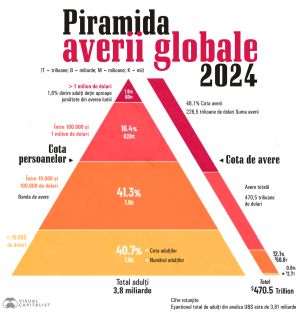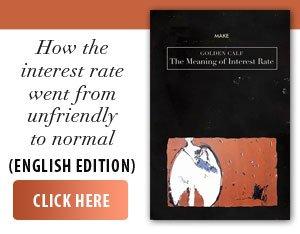Despite the essential role that pension systems play in social protection and in strengthening capital markets in the European Union, the European Commission's efforts to support the development of supplementary pensions (those incomes that supplement state pensions), more specifically Pillar II and Pillar III pensions, have largely failed to deliver the expected results, the European Court of Auditors (ECA) said in a report published yesterday.
"In the context of demographic and fiscal pressures facing EU economies, supplementary pensions should become increasingly important. Unfortunately, neither employer-sponsored pensions nor the pan-European personal pension product have lived up to expectations, especially when it comes to working across borders. Further steps need to be taken to strengthen these systems," says Mihails Kozlovs, ECA member responsible for the aforementioned report.
Although almost 50 million people benefit from supplementary pensions in the EU, the market is highly concentrated in just a few Member States. Moreover, the costs and returns of existing systems remain largely non-transparent. This affects citizens' ability to plan effectively for their retirement age. Despite several initiatives launched by the European Commission and the European Insurance and Occupational Pensions Authority (EIOPA), occupational pensions have not developed sufficiently in most EU countries, and the pan-European personal pension product (launched in 2022) has failed to capture public interest.
Occupational pension funds currently manage assets worth around euro2.8 trillion, serving around 47 million employees and retirees. However, the cross-border activity of these funds is limited to a few countries with a tradition in the field, as the EU legislative framework introduces additional requirements that are not always perceived as favourable.
The ECA auditors point out that pensions for people aged 65 to 74, i.e. for people in their early retirement years, amount to, on average, around three-fifths of the income from work of people aged 50 to 59, i.e. people in their last working years. In addition, according to European Commission data, older people (over 65) are at a higher risk of poverty than those aged 18 to 64, especially in Central and Eastern European countries. Moreover, according to the data in the report, at the end of 2023, of the 27 EU Member States, 13 each had a level of less than 10% of Gross Domestic Product for Pillar II and Pillar III in each state. Among these countries is Romania, where Pillar II and Pillar III had a value of 8% of GDP in 2023, according to data presented by the ECA.
Therefore, the European Commission and EIOPA (European Insurance and Occupational Pensions Authority) have tried to strengthen Pillars II and III in order to promote occupational pensions and launch a pan-European personal pension product (PEPP). However, the report finds that these steps have failed to generate a functional internal market in the field. Although the IORP II Directive was intended to facilitate the cross-border activity of occupational pension institutions, in reality it remains limited and concentrated in a few countries. The IORP sector is dominated by countries such as the Netherlands, Germany and Ireland, while in five Member States - the Czech Republic, Estonia, Hungary, Latvia and Romania - such institutions are non-existent. The main barriers are the differences in social and labour legislation between countries, which generate additional costs and complexity for cross-border operators.
On the other hand, the PEPP product, launched with the promise of offering citizens a flexible and portable retirement savings instrument, has had a negligible impact. Three years after its entry into force, only one provider has introduced the PEPP on the market, with less than 5,000 participants and managing assets of less than EUR 12 million. In essence, the pan-European personal pension product, designed as a portable savings instrument for employees moving between countries, was launched with high hopes, but failed to become attractive. The lack of tax incentives and the 1% cap imposed by the European regulation on costs and fees contribute to the lack of attractiveness of this product for financial institutions.
Transparency is another sensitive point. Despite EIOPA's efforts to improve information for citizens, people do not have access to a comprehensive view of their pensions - whether state, occupational or personal. The lack of clear information on costs, returns and performance affects public trust and the efficiency of financial decisions. Moreover, the supervision of pension funds is not uniform across the EU, and the reluctance of national authorities to the harmonisation proposed by EIOPA makes it difficult to adopt common standards.
The European Court of Auditors stresses that EU measures alone cannot create an integrated and fair market for supplementary pensions. It recommends that the Commission speed up the assessment of the PEPP failure, strengthen the supervision of IORPs and increase transparency in pension systems. In parallel, EIOPA is urged to prioritise its impact tools, improve risk assessment and increase clarity on costs for beneficiaries.
In general, pension systems in the EU are based on three pillars: mandatory state pensions, employer-supported occupational pensions and voluntary personal pensions. Occupational pensions can be structured as either defined benefit or defined contribution schemes. In some countries, such as Denmark and the Netherlands, these funds play a major economic role, managing assets exceeding national gross domestic product. In others, however, they are non-existent.
The European Court of Auditors' special report, entitled "Developing supplementary pensions in the EU - EU measures fail to strengthen the role of occupational pensions and establish a pan-European personal pension product", draws attention to the urgent need for further measures to transform these instruments into real support for future retirees. Without ambitious reforms, the risk of millions of Europeans facing insufficient income in old age remains high.



























































